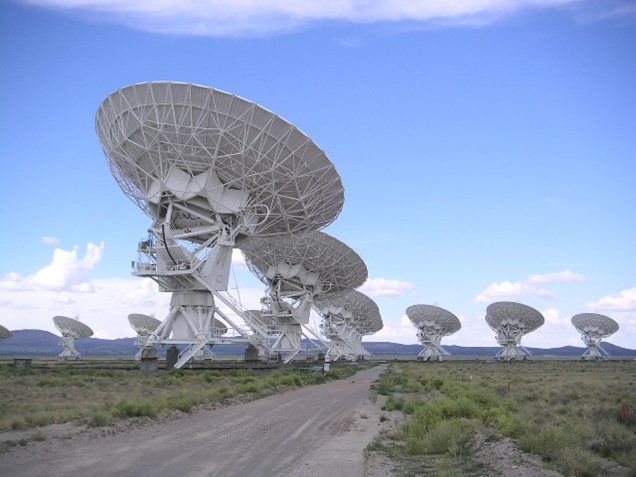Overview

Figure G1.[10] The Very Large Array
The ground collector requires a large gain receiver capable of steering toward the transmitter satellite. A mechanical steering seems impractical for the size of a single dish, so a uniform circular antenna array with varying current phase excitation of each element will be utilized for beam steering. Utilizing an array over a single antenna can lead to dramatic improvements in directivity, the ability to shape the radiating pattern, and by controlling either the amplitude or phase of the current driving each array element, one can steer the beam [12]. The array will be a narrow band receiver, with the only required frequency to be at the ISM (industrial, scientific, and medical) band of 24 to 24.250GHz (i.e. 12.50mm ≤ λ ≤ 12.37mm). The individual antennas will be parabolic reflectors utilizing the Cassegrain architecture. The beam steering will be performed using the communications system to locate the position of the satellite transmitter and the signal of interest (SOI). This will be performed using the Minimum Mean Square Error (MMSE) beamforming algorithm.
